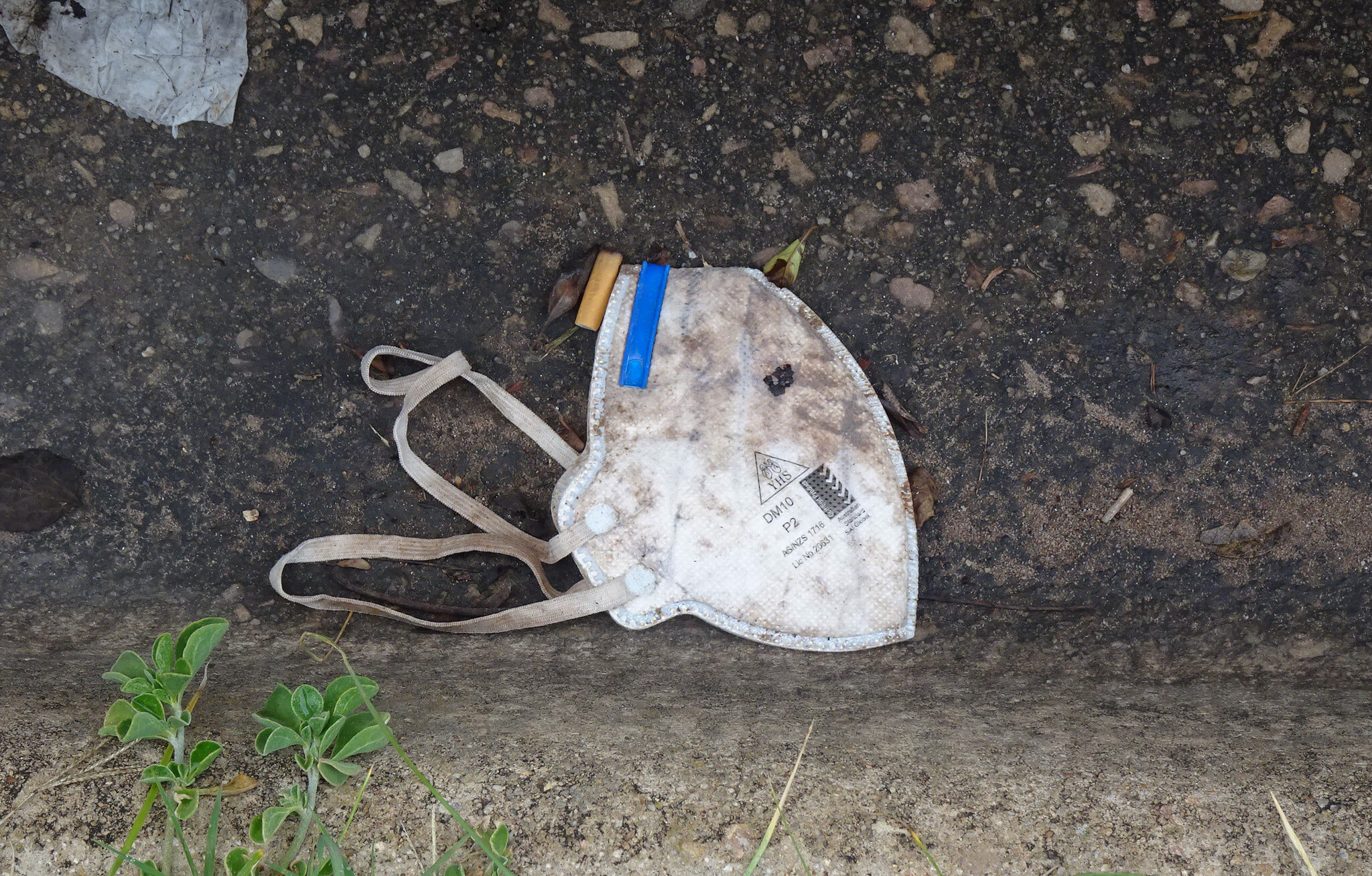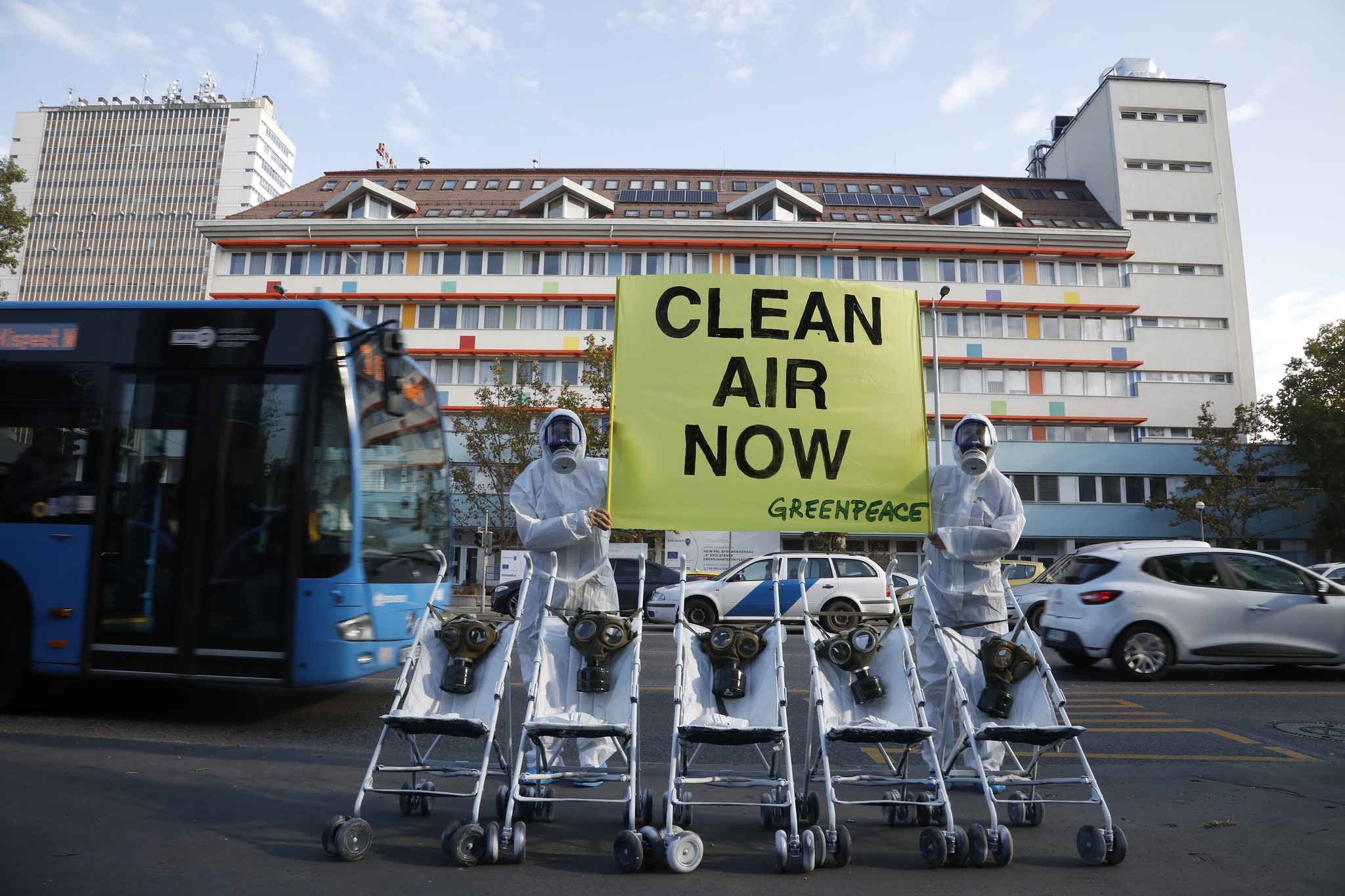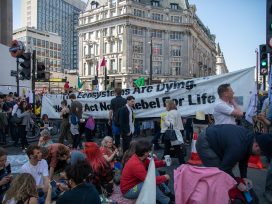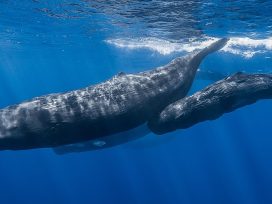How long did the clear skies last?
Initial COVID-19 lockdowns seemed like a gift to nature. But less traffic and fewer industrial emissions soon turned into increased car use from social distancing and new levels of plastic consumption. Why are pre-pandemic values, encouraging lower consumption, at odds with staying healthy?
Fear, insecurity and depression spread quickly across the globe alongside COVID-19 in 2020. Many experienced personal hardship and yet the situation also brought a counterpoint – during lockdowns, everything suddenly became much more peaceful and quiet. Previously congested roads became empty, noise level reduced dramatically in cities by up to 35-68%, people heard birds singing again, even wildlife entered residential areas. Studies emerged in 2020, such as the European Environment Agency’s report, measuring reductions in air pollution due to traffic restrictions. Decreasing greenhouse emission were predicted.
However, as the pandemic progressed into autumn 2020 and beyond, traffic congestion quickly returned to pre-pandemic levels, and even increased in some places due to social distancing. Industrial emissions also quickly hit previous levels. In addition, the amount of medical and other single-use waste kept growing.
Three million face masks every minute
It is estimated that we throw away 3 million face mask every minute worldwide. This means more than 1,555 billion pieces of single-use plastic waste have been generated annually since the COVID-19 pandemic began. Face masks are mostly made from polyproline microfibers, and currently waste management systems are not in place to collect and recycle them, as is done with many other types of plastic. OceanAsia estimates that around 1.5-1.6 billion face masks, equivalent to 4.680 to 6.240 tonnes of waste, ended up in the oceans in 2020 alone.1
This adds to the current 8-12 million tonnes of plastic waste already being dumped into the oceans every year. Oceanic plastic pollution is already dramatically damaging the environment.
OceanAsia calculates that ‘plastic pollution kills an estimated 100,000 marine mammals and turtles, over a million seabirds, and even greater numbers of fish, invertebrates and other animals each year. It also negatively impacts fisheries and the tourism industry, and costs the global economy an estimated $13 billion USD per year.’ The plastic fibres in the masks are about 1-10 microns which, when disposed of in the environment, easily and directly release problematic microplastics, in much greater amounts than plastic bags or PET bottles.
The use of washable and reusable face masks, which can effectively mitigate coronavirus’ transmission outdoors, has been proposed by environmentalist. However, as surgery masks or FFP2 masks provide better protection against COVID-19 than cotton masks, especially indoors, countries like Austria, and airlines like Finnair have banned the use of more environmentally sound masks. The resultant disposable face mask pollution problem will undoubtedly last as long as the pandemic as a result.
Other forms of medical waste and single-use personal protection equipment, including plastic gloves and disposable medical gowns, have also dramatically increased due to strict health measures. A PNAS study from November 2021 estimated that 193 countries have produced about 9.2 million tonnes of pandemic-associated plastic waste from early 2020 until August 2021. Once again, as a result, much has entered the oceans: more than 28,000 tonnes of pandemic-related plastic.

Discarded FFP2 mask. Photo by Michael Coghlan via Flickr
Yiming Peng and Peipei Wu from Nanjing University found that 87.4% of this waste originated in hospitals. In Wuhan for instance, after the outbreak of the pandemic, medical waste generation increased from 40-50 tonnes to 247 tonnes a day on 1 March 2020. Other Asian cities such as Manila, Kuala Lumpur, Hanoi and Bangkok have also faced substantial growth in medical waste generation, with 154-280 tonnes of extra material used compared with pre-pandemic averages.
The 2021 PNAS study estimated that 28,550 tonnes of plastic waste were transported via 369 major rivers to the seas and oceans: the 10 most polluted rivers globally carried 79% of pandemic-related discharges and the top 20 contained 91%. Most of the waste (46%) originated from Asia. The Shatt al-Arab River in Iraq carried the most, totalling 5,200 tonnes. Second in Asia was the Indus River with 4,000 tonnes. And, third, the Yangtze River with 3,700 tonnes. Europe was responsible for 24% of pandemic-related waste: the Danube being the most polluted, carrying 1,700 tonnes of plastic to the Black Sea. North and South America were responsible for 22% of pandemic-related waste.
Single-use lifestyle
With lockdowns, social distancing and fear of transmitting the virus, home delivery, single-use packaging and the use of disposable tableware, coffee cups and food containers has become more frequent. According to Eurostat, restaurant delivery services increased in France by 24%, Switzerland by 23%, UK by 18% compared with pre-pandemic times. In the US, home deliveries increased more than 50%. The global plastic packaging market is thought to have increased from 909 billion US dollars in 2019 to above 1 trillion US dollars by 2021.
A study by Leal Filho et al. from July 2021 analysing consumption trends globally found an increase in most types of household waste. The authors put increased waste generation down to the amount of time people have spent at home. According to the survey, most household food packaging waste types, e-waste and medical waste increased. Plastic packaging and food waste showed an exponential increase in most households: 53% and 45% respectively. The data supports this observation, as packed food demand grew dramatically in March 2020: an increase of 49.8% in France, 69.6% in the UK and 76% in the USA.
An article published in Nature, September 2021, highlights that in Singapore alone home delivery services generated an additional 1.21 million tonnes of plastic waste from April to May 2020.
The sudden, large amounts of extra waste and disrupted services due to the restrictions caused waste management system difficulties and the mismanagement of waste globally. In some rural areas of the UK, communities faced a threefold increase in waste mismanagement. According to the World Bank Blog, the recycling market collapsed during lockdowns in many parts of the world. In South and Southeast Asia, for example, informal waste pickers were not able to do their everyday work and recyclers were afraid of buying the waste they collected. This caused a significant drop in recycling: ‘informal waste collectors across India, Philippines, Vietnam, Thailand, and Indonesia collected 65 percent less plastic in volume, while recyclers perceived an average 50 percent drop in demand for their recycled plastic.’
Unfortunately, the COVID-19 pandemic has caused a backlash in the fight against single-use packaging, especially single-use plastic. An early 2021 report states: ‘comprehensive data analysis does indicate that COVID-19 will reverse the momentum of years-long global battle to reduce plastic waste pollution.’ It will probably take years to return to the pre-COVID-19 level of ambition to shelve single-use packaging.
Sanitizers and disinfectants everywhere
The use of mainly alcohol-based hand sanitizers and other disinfectants has also boomed since COVID-19’s outbreak. Even though it is now known that the virus’ transmission by hand is minor compared with that by droplet particles, sanitizer is still commonly used. The large-scale use of disinfectants and sanitizers have a negative impact on the environment and health.
From a human health perspective, disinfectants like ethyl-alcohol, benzalkonium chloride and bleach all have irritative and toxic effects. On the skin, they can cause rashes. If inhaled, they irritate and can inflame the respiratory tract. Some, even in small doses, can damage the central nervous system. Disinfectants are also known to trigger asthma. Scientists link increased exposure to antimicrobial compounds to the growing antimicrobial resistance of several bacteria.
When discharged through wastewater or directly into the environment, disinfectants and sanitizers are also harmful, especially to aquatic environments. At the beginning of the pandemic, it was common but quite ineffective to disinfect open air spaces, such as streets and markets, posing an elevated risk to nature. Studies show that disinfectants, both through direct discharge and sewage effluents, can damage aquatic ecosystems and wildlife. Overspraying can also cause the death of certain bird species. Urban wildlife is especially at risk due to the elevated use of disinfectant.
Lockdowns and climate change
Lockdowns, initially less traffic and industries on-hold resulted in CO2 emissions falling by 5.4% in 2020 globally. However, this was just a temporary drop. It is estimated that overall CO2 emissions rose by 4.9% in 2021, almost returning to the pre-pandemic level. This sudden re-growth mainly came from increased coal use in China. Both India and China already had higher emissions in 2021 than 2019: China’s coal-use grew by 5.5% and India’s by 4.4%. The Global Carbon Project estimates that fossil-fuel CO2 emissions in 2021 will only be 0.8% below the 2019 level, before COVID-19 restrictions.
Aviation has been the fastest growing greenhouse gas emitting sector in recent years. It is currently estimated that the sector is responsible for up to 3.5% of total anthropogenic warming. The pandemic brought a massive fall in aviation: according to the International Civil Aviation Organization (ICAO), world scheduled passenger numbers saw an overall 60% reduction in 2020 and 49% reduction in 2021 compared with 2019 levels.
Fewer flights meant less CO2 emissions from the sector. According to the Global Carbon Project, during the peak of 2020 COVID-19 lockdowns, aviation emissions reduced by up to 60%. A study focused on Latin American countries, published in June 2021, estimates that 2020 flight restrictions and airport lockdowns may cause the temperature to decrease by at least 0.08°C by 2050.
Greenpeace warned in early 2022 that over 100,000 empty or near empty flights will be flying across Europe for airlines to retain their take-off and landing slots. These ‘ghost flights’ emit the climate equivalent of about 2.1 million tonnes of CO2, the same amount of greenhouse gas emitted by more than 1.4 million cars annually. An EU ruling states that airlines are required to run at least 80% of booked flights to secure their airport slots. Although this was temporarily reduced to 50% of flights by the EU Commission, the permitted level was increased to 64% in March 2022.
Fewer emissions, slower warming?
‘CO2 emissions fell by 5.4% in 2020,’ but ‘the amount of CO2 in the atmosphere continued to grow at about the same rate as in preceding years,’ reports NASA in an article from November 2021. Their interpretations of satellite data suggest different explanations. One factor appears to be that oceans didn’t absorb the same amount of CO2 as in previous years, most likely as a reaction to reduced CO2 pressure at the water’s surface.

Hungarian Greenpeace action. Photo by Járdány Bence / Greenpeace via Flickr
Furthermore, a reduction in NOx emissions, due to limited transportation, may have led to cleaner air, but it did not reduce CO2, nor did it positively impact methane levels: NOx contributes to methane reduction, another strong greenhouse gas. Researchers found that ‘as with CO2, the drop in emissions didn’t decrease the concentration of methane in the atmosphere. Instead, methane grew by 0.3% in the past year – a faster rate than at any other time in the last decade.’
Air pollution
The first strict, early 2020 lockdowns brought a short-term positive result: a drop in transport related air pollution. First, China reported that NO2 (nitrogen-dioxide) concentrations had dropped during the first lockdown period. Even PM2.5/PM10 (small particles) decreased to a smaller degree.
In Europe, the European Environmental Agency (EEA) also reported a significant decrease in NO2 pollution in March 2020 in several European cities. Observations were only undertaken for a week, but an up to 21-55% decrease was recorded compared with the month before and the same week in 2019. Estimations linked this drop in air pollution with saving around 800 lives in Europe, linked to respiratory illness. In China, an even greater health benefit was linked to the cleaner air brought by strict lockdowns: 77,000 lives were potentially saved.
However, soon enough, transport emissions increased again. People started going back to work and, as individual safety measures, private car use became favourable; the use of public transport decreased to avoid being physically close to other citizens. Some countries, like Hungary, introduced free public parking as a ‘safety measure’ which caused a further increase in traffic, mainly in Budapest. According to the EEA, Budapest was the only European city, where NO2 levels increased for the first time during late 2020.
Greenpeace in Hungary demonstrated that NO2 levels were alarming high around hospitals during the pandemic. Three weeks of testing in December 2020 found on average 33% higher NO2 concentrations at ten hospital treating COVID-19 patients compared with official monitoring stations in the city.
High air pollution, closely linked with COVID-19 mortality, is considered especially dangerous at hospitals. Exposure to pollution over many years and an increase in exposure to air pollutants is also associated with increased COVID-19 mortality. A relationship has even been found between air pollution and elevated COVID-19 transmission.
Any hope?
Obviously, the end or reduction of the COVID-19 pandemic would quickly effect a decreased generation of medical waste and use of disinfectants. Giving up the everyday use of single-use packaging possibly takes longer, as consumers easily find it convenient. It will take lots of effort to bring back the plastic-free movement what became popular before the pandemic.
Predictions suggest that without travel restrictions global aviation will rise to pre-pandemic levels in four to five years. On the positive side, many cities have introduced new infrastructure for sustainable modes of transport: new bicycle lanes, new walking areas, etc. Most of these initiatives will be permanent, but already the extent of car traffic is close to pre-pandemic levels globally. And public transport use is recovering much slower in many parts of World.
Either the recovery of industry happens in a sustainable way or we go back to the climate and biodiversity destructive business-as-usual scenario. Unfortunately, as explored in an October 2021 paper, 77% of post-pandemic economic recovery funds in reviewed countries were ‘still subsidizing fossil fuel development, with some of those subsidies – accounting for many times their whole health budget’. The authors warn: ‘As trillions of dollars are being unrolled for COVID recovery, we are really risking that those dollars are assigned to high-carbon intensity activities and a carbonized recovery.’
The Greens first thought that the pandemic might provide the opportunity for a much greener economy, change of mindsets bringing more sustainable consumption patterns. But now we rather hope that COVID-19 won’t bring a similar backlash, as the 2008-2009 economic crisis did, undermining sustainability goals achieved in past decades.
Around 52 billion masks were made in 2020. The above figures are based on a conservative loss rate of 3% and 3-4 grams of waste per mask.
Published 16 May 2022
Original in English
First published by Eurozine
© Gergely Simon / Eurozine
PDF/PRINTIn collaboration with
In focal points
Newsletter
Subscribe to know what’s worth thinking about.
Related Articles

Just like climate activists today, conscientious objectors in the two World Wars broke the law to do the ‘right thing’. Though often ostracised by society at large, communities of dissent provided support in fighting battles of conscience, as the history of British pacifism shows.

The feeling that we are being watched by a wild animal can lead to shock. Suddenly we comprehend how immense the world is, and how overwhelmingly lonely we feel.






